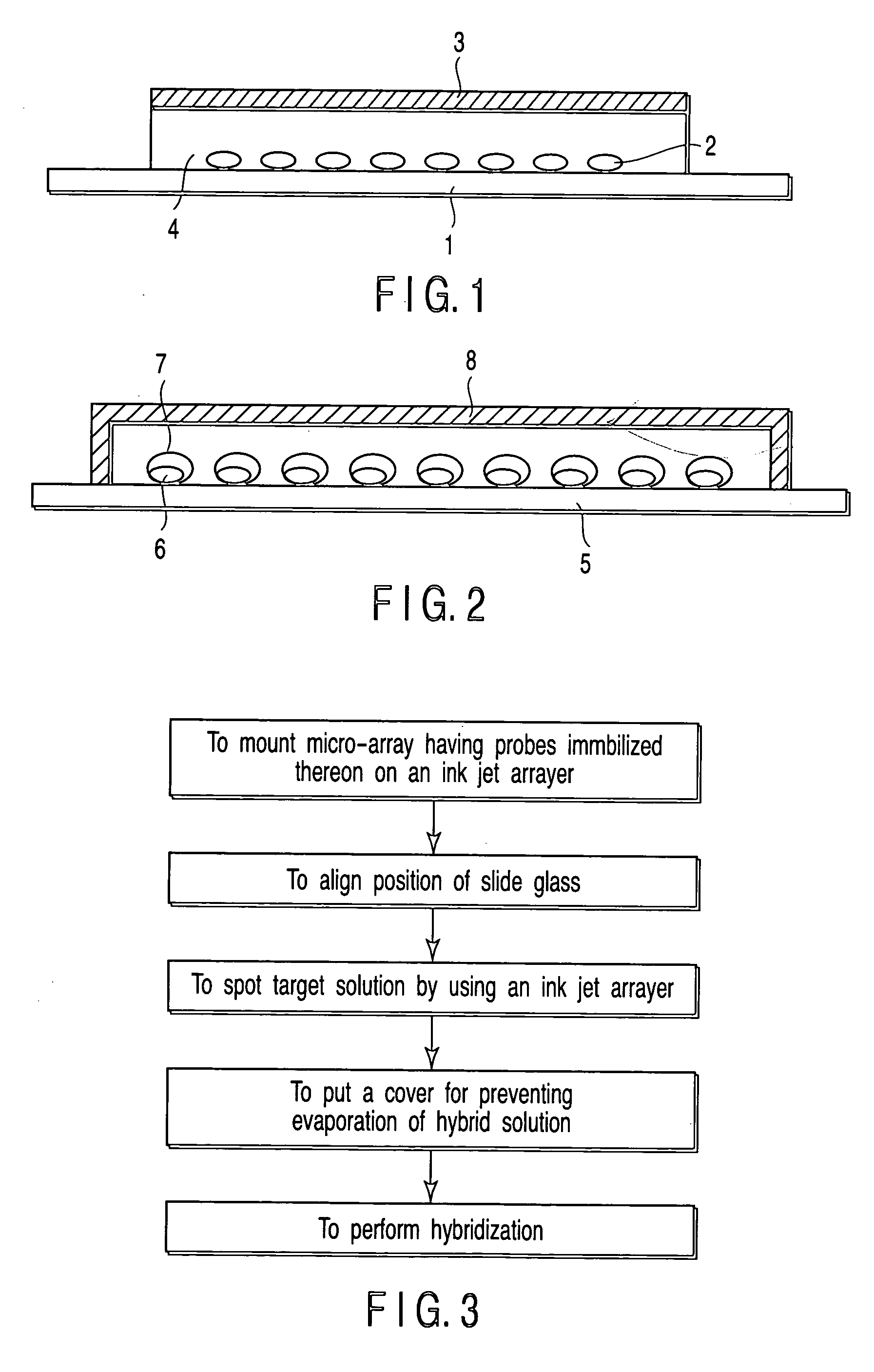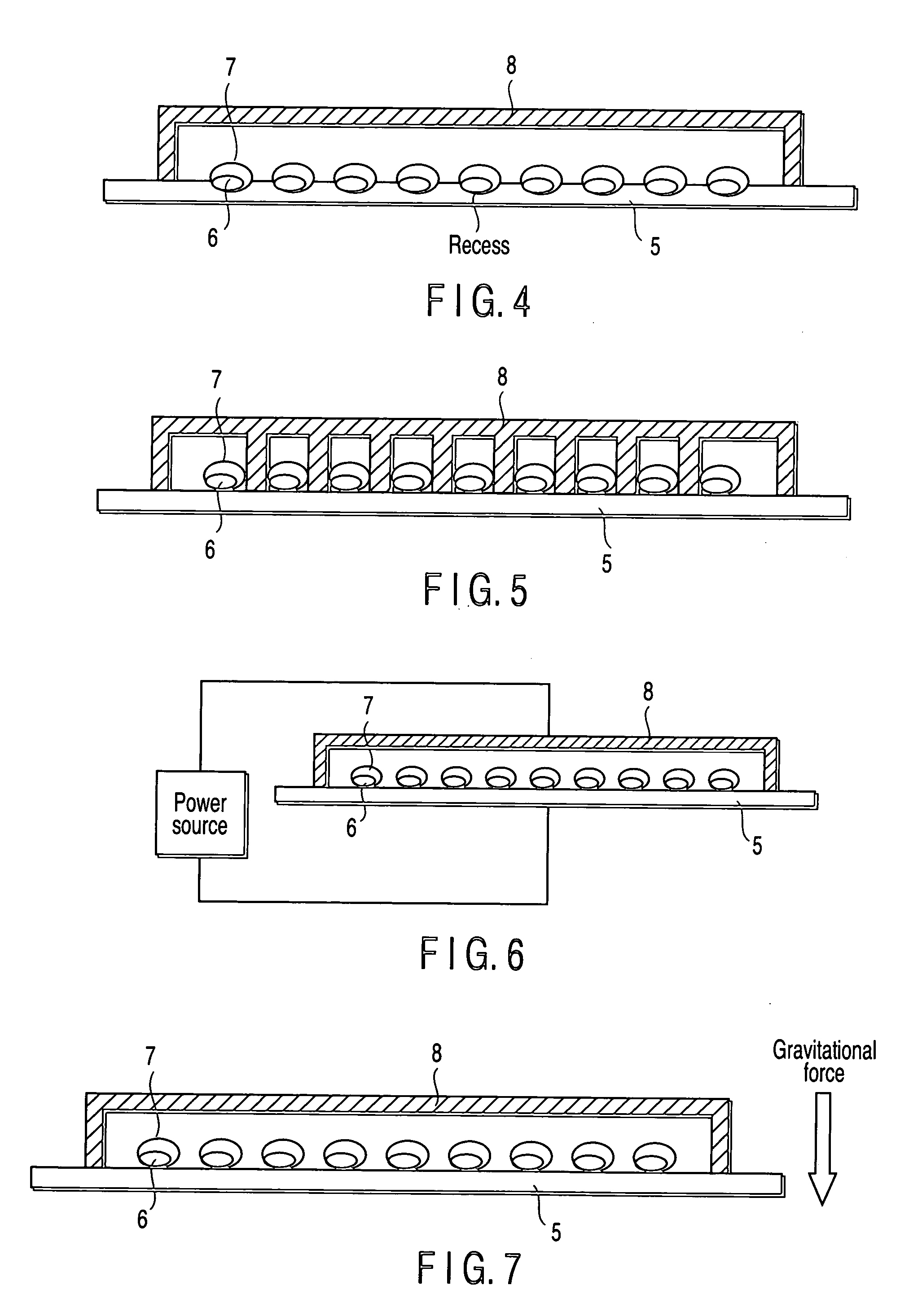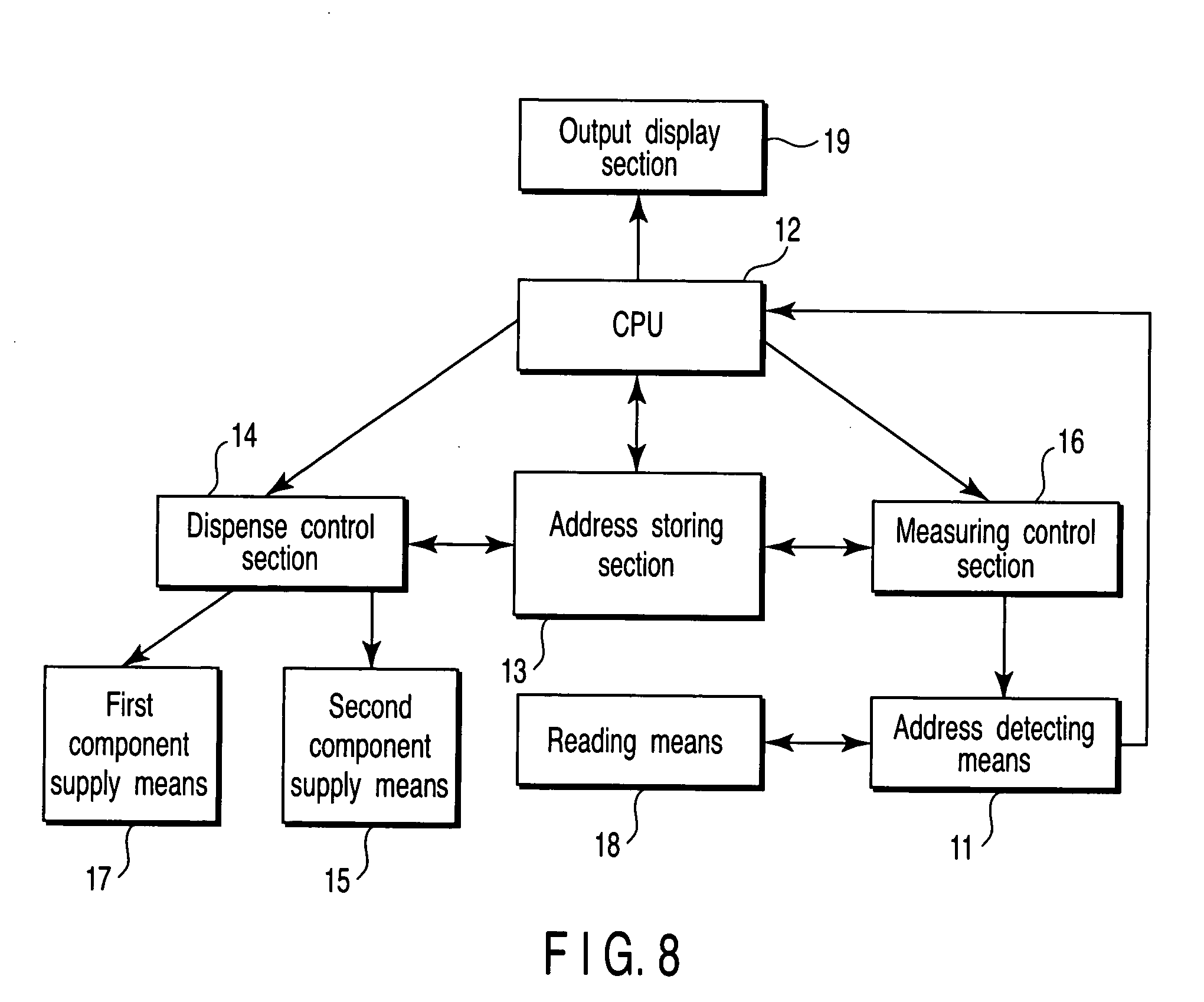Method and apparatus for arranging liquid reaction components on substrate surface for detecting target substance by reaction among plural reaction components on substrate and article utilized in the method
- Summary
- Abstract
- Description
- Claims
- Application Information
AI Technical Summary
Benefits of technology
Problems solved by technology
Method used
Image
Examples
example 1
[0089] First component: cell;
[0090] Second component: primer, substrate base, DNA polymerase;
[0091] Third component: protease;
example 2
[0092] First component: HCV antigen;
[0093] Second component: anti-immuno globulin antibody marked with fluorescent light;
[0094] Third component: anti-HCV antibody;
[0095] In order to make it possible to store the first component 22 and the second component 23 covering the first component 22 in the micro-array, these components can be subjected to freeze drying in the present invention so as to put these components under a dried state. In this case, it is desirable for a denaturation preventing agent such as a saccharide to be present together with the first and second components in order to prevent the protein from being denatured during the storage. The saccharides used for this purpose include, for example, sucrose, treharose, glucose, dextrin and xylose. Also, in order to make it possible to store the first component 22 and the second component 23, it is possible to cover the substrate 20 with a shielding means such as oil materials (e.g., silicone oil, olive oil and fluid para...
PUM
| Property | Measurement | Unit |
|---|---|---|
| Size | aaaaa | aaaaa |
| Shape | aaaaa | aaaaa |
Abstract
Description
Claims
Application Information
 Login to View More
Login to View More - R&D
- Intellectual Property
- Life Sciences
- Materials
- Tech Scout
- Unparalleled Data Quality
- Higher Quality Content
- 60% Fewer Hallucinations
Browse by: Latest US Patents, China's latest patents, Technical Efficacy Thesaurus, Application Domain, Technology Topic, Popular Technical Reports.
© 2025 PatSnap. All rights reserved.Legal|Privacy policy|Modern Slavery Act Transparency Statement|Sitemap|About US| Contact US: help@patsnap.com



